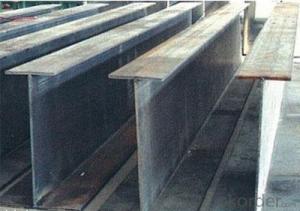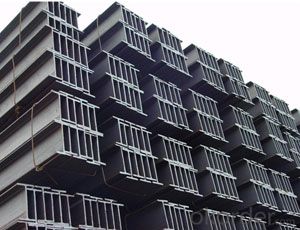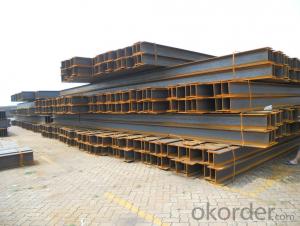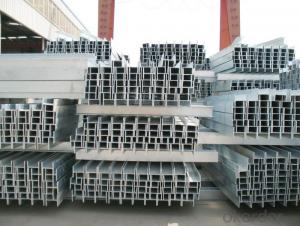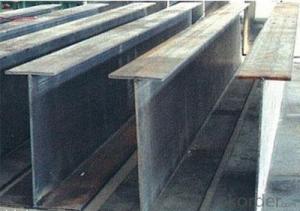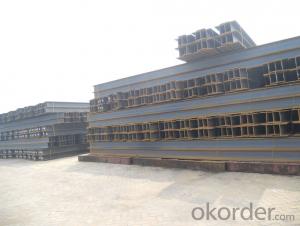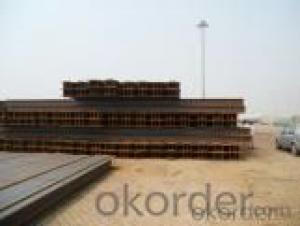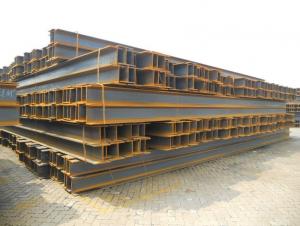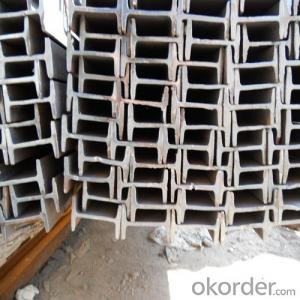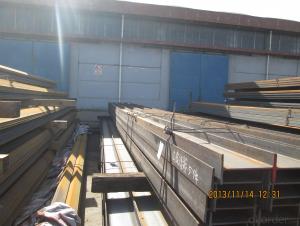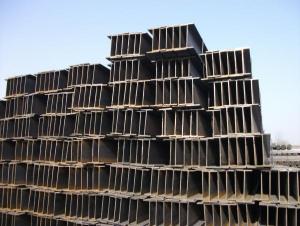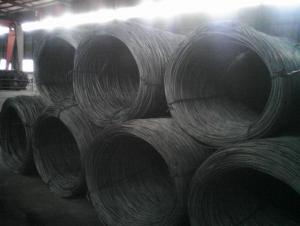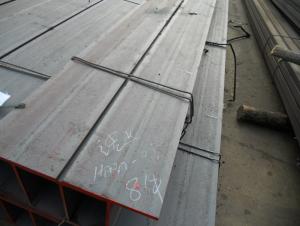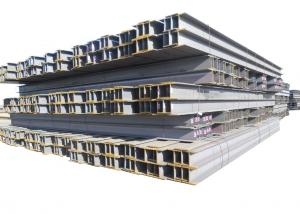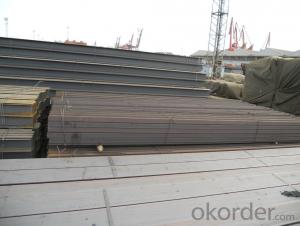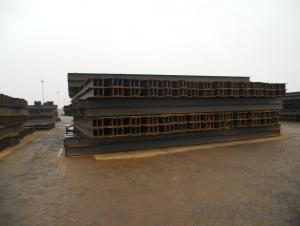Wide steel H beam for construction JIS G 3192
- Loading Port:
- Tianjin
- Payment Terms:
- TT or LC
- Min Order Qty:
- 25 m.t
- Supply Capability:
- 100000 m.t/month
OKorder Service Pledge
OKorder Financial Service
You Might Also Like
Product Description:
OKorder is offering wide steel H beam for construction JIS G 3192 at great prices with worldwide shipping. Our supplier is a world-class manufacturer of steel, with our products utilized the world over. OKorder annually supplies products to European, North American and Asian markets. We provide quotations within 24 hours of receiving an inquiry and guarantee competitive prices.
Product Applications:
Wide steel H beam are ideal for structural applications and are widely used in the construction of buildings and bridges, and the manufacturing, petrochemical, and transportation industries.
Product Advantages:
OKorder's steel H beam are durable, strong, and resist corrosion.
Main Product Features:
· Premium quality
· Prompt delivery & seaworthy packing (30 days after receiving deposit)
· Corrosion resistance
· Can be recycled and reused
· Mill test certification
· Professional Service
· Competitive pricing
Product Specifications:
1. Standard: GB700-88, Q235B2.
2. Grade: Q235, SS400 or Equivalent
3. Length: 6m,10m, 12m as following table
4. Invoicing on theoretical weight or actual weight as customer request
5.Payment: TT or L/C
6. Sizes:
SIZE(mm) | DIMENSION(kg/m) |
100*100 | 16.9 |
125*125 | 23.6 |
150*75 | 14 |
150*150 | 31.1 |
148*100 | 20.7 |
198*99 | 17.8 |
200*100 | 20.9 |
248*124 | 25.1 |
250*125 | 29 |
Usage & Applications of Hot Rolled Structural Steel H Beam
Commercial building structure ;Pre-engineered buildings; Machinery support structure; Prefabricated structure; Medium scale bridges; Ship-building structure. etc.
Packaging & Delivery of Hot Rolled Structural Steel H Beam
1. Packing: it is nude packed in bundles by steel wire rod
2. Bundle weight: not more than 3.5MT for bulk vessel; less than 3 MT for container load
3. Marks:
Color marking: There will be color marking on both end of the bundle for the cargo delivered by bulk vessel. That makes it easily to distinguish at the destination port.
Tag mark: there will be tag mark tied up on the bundles. The information usually including supplier logo and name, product name, made in China, shipping marks and other information request by the customer.
If loading by container the marking is not needed, but we will prepare it as customer request.
4. Transportation: the goods are delivered by truck from mill to loading port, the maximum quantity can be loaded is around 40MTs by each truck. If the order quantity cannot reach the full truck loaded, the transportation cost per ton will be little higher than full load.
5. Delivered by container or bulk vessel
FAQ:
Q1: Why buy Materials & Equipment from OKorder.com?
A1: All products offered byOKorder.com are carefully selected from China's most reliable manufacturing enterprises. Through its ISO certifications, OKorder.com adheres to the highest standards and a commitment to supply chain safety and customer satisfaction.
Q2: How do we guarantee the quality of our products?
A2: We have established an advanced quality management system which conducts strict quality tests at every step, from raw materials to the final product. At the same time, we provide extensive follow-up service assurances as required.
Images:
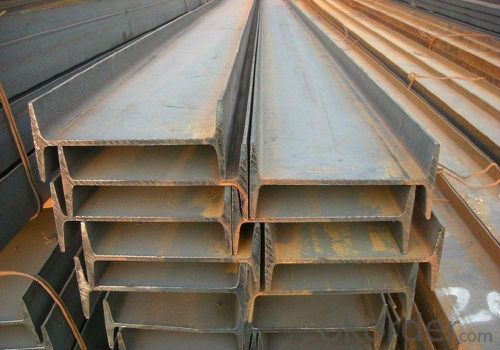
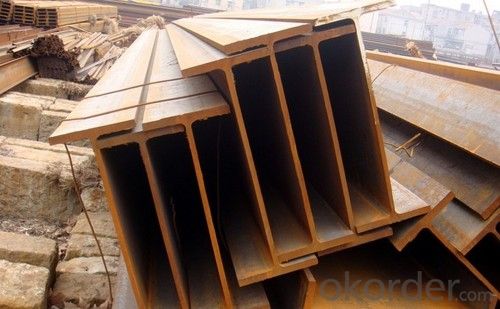
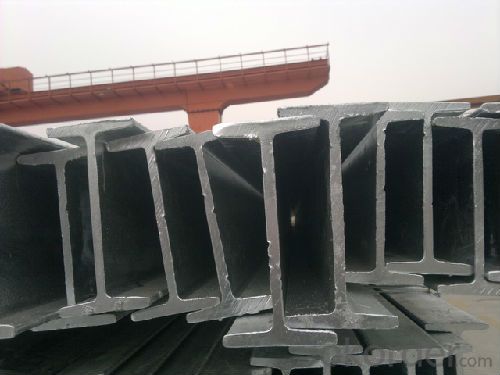
- Q: How do Steel H-Beams contribute to the overall architectural design of a structure?
- Steel H-Beams are essential structural components that contribute significantly to the overall architectural design of a structure. Their unique shape and strength allow for longer spans and increased load-bearing capabilities, enabling architects to design larger, more open spaces with fewer supporting columns. This flexibility in design enhances the aesthetic appeal by creating visually appealing and functional spaces. Additionally, H-Beams provide structural stability, ensuring the integrity and safety of the building, making them a vital element in the architectural design process.
- Q: Are steel H-beams resistant to rot or decay?
- No, steel H-beams are not resistant to rot or decay. Unlike wood, steel does not rot or decay, as it is not an organic material. Steel beams are made from iron with varying amounts of carbon and other elements, which gives them their strength and durability. However, it is important to note that while steel beams are not prone to rot or decay, they can still corrode over time due to exposure to moisture and other environmental factors. To prevent corrosion, steel beams are often coated with protective layers, such as paint or galvanization, which helps to extend their lifespan and maintain their structural integrity.
- Q: How are steel H-beams protected against corrosion during construction?
- Steel H-beams are protected against corrosion during construction through various methods such as galvanization, painting, or applying protective coatings. These measures create a barrier between the steel surface and the surrounding environment, preventing moisture, oxygen, and other corrosive agents from coming into direct contact with the steel, thus minimizing the risk of corrosion.
- Q: Can steel H-beams be used in the construction of power plants?
- Yes, steel H-beams can be used in the construction of power plants. Steel H-beams are commonly used in construction due to their strength, durability, and ability to support heavy loads. In power plant construction, where structural integrity is crucial, steel H-beams are often used as structural elements for supporting large equipment, platforms, and structures, ensuring the stability and safety of the power plant.
- Q: Can steel H-beams be used for supporting modular building systems?
- Yes, steel H-beams can be used for supporting modular building systems. Steel H-beams are known for their high strength and load-bearing capacity, making them suitable for providing structural support to modular buildings. They can effectively distribute the weight and loads of the building system, ensuring stability and safety. Moreover, steel H-beams can be easily fabricated and customized to meet the specific requirements of the modular building system, making them a popular choice in the construction industry.
- Q: What are the different grades of steel used for manufacturing H-beams?
- There are several grades of steel that are commonly used for manufacturing H-beams. These grades vary in terms of their chemical composition and mechanical properties, which determine their suitability for different applications. Some of the commonly used grades include: 1. ASTM A36: This is a low carbon steel grade that is widely used for general structural purposes. It offers excellent weldability and machinability, making it a popular choice for H-beam manufacturing. 2. ASTM A572: This grade of steel offers higher strength and better corrosion resistance compared to A36. It is commonly used for applications that require higher load-bearing capacity, such as in heavy construction and bridge building. 3. ASTM A992: This grade is specifically designed for wide-flange shapes like H-beams. It offers higher yield strength and better ductility compared to A36, making it suitable for structural applications that require superior performance. 4. ASTM A588: This grade of steel is known for its high atmospheric corrosion resistance. It is often used in outdoor applications, such as bridges and buildings located in harsh environments. 5. ASTM A709: This grade is primarily used for construction of bridges and other infrastructure projects. It offers high tensile strength, excellent toughness, and improved weldability, making it suitable for H-beam manufacturing in such applications. It is important to note that the selection of a specific grade of steel depends on the requirements of the project, including the load-bearing capacity, environmental conditions, and other factors. Consulting with a structural engineer or steel supplier can help determine the most appropriate grade for a particular application.
- Q: What are the dimensions of a standard steel H-beam?
- The dimensions of a standard steel H-beam may differ based on the individual design and manufacturer. Nevertheless, there are frequently employed dimensions for these beams. Typically, they possess a flange width ranging from 100mm to 900mm, a web height ranging from 100mm to 300mm, and a weight per meter ranging from 17kg to 166kg. It should be emphasized that these dimensions may vary and be subject to specific requirements depending on the intended purpose and load-bearing capacity of the H-beam.
- Q: What are the common sizes of steel H-beams available in the market?
- The market offers a diverse selection of steel H-beams with varying sizes to meet specific requirements and applications. Nevertheless, there are certain standard sizes that are commonly available. The height of these sizes typically falls within the range of 100mm to 1000mm, while the widths vary from 50mm to 500mm. As for the lengths, they also vary but are often found in standard sizes of 6 meters, 9 meters, or 12 meters. These commonly found sizes effectively address a wide range of construction and structural demands, enabling adaptability and flexibility in various projects.
- Q: What are the welding requirements for steel H-beams?
- The welding requirements for steel H-beams are determined by several factors including the specific steel grade, the thickness of the beams, the type of welding process being used, and the intended application of the beams. Firstly, it is important to select the appropriate steel grade for the H-beams. Commonly used steel grades for H-beams include ASTM A36, ASTM A572, and ASTM A992. These grades have different mechanical properties and welding characteristics, so it is crucial to consult the manufacturer's specifications or relevant welding codes to determine the suitable steel grade for the specific application. Next, the thickness of the H-beams is an important factor that affects the welding requirements. Thicker beams may require preheating before welding to control the cooling rate and minimize the risk of hydrogen-induced cracking. Preheating temperatures and durations should be determined based on the steel grade and thickness, and the specific welding code being followed. The type of welding process being used is another crucial consideration. Common welding processes for H-beams include shielded metal arc welding (SMAW), gas metal arc welding (GMAW), and flux-cored arc welding (FCAW). Each process has its own set of requirements in terms of electrode selection, welding parameters, and post-weld heat treatment. Proper fit-up and joint preparation are also important for achieving high-quality welds on H-beams. The beams should be properly aligned and positioned to ensure full penetration of the weld and minimize distortion. Joint preparation, such as beveling or grinding, may be necessary to achieve appropriate groove dimensions for certain welding processes. Additionally, it is important to consider any specific requirements for post-weld heat treatment or inspection. Some applications may require stress relieving or annealing of the welded H-beams to improve their mechanical properties or reduce residual stresses. Nondestructive testing methods, such as ultrasonic or magnetic particle inspection, may be necessary to ensure the integrity of the welds. Overall, the welding requirements for steel H-beams are dictated by the steel grade, beam thickness, welding process, and application. It is essential to consult relevant welding codes, manufacturer specifications, and engineering professionals to determine the specific welding procedures, parameters, and quality control measures necessary to achieve reliable and structurally sound welds on H-beams.
- Q: Can steel H-beams be used in commercial building facades?
- Yes, steel H-beams can be used in commercial building facades. These beams offer structural support and can be aesthetically pleasing when incorporated into the design. They provide durability, strength, and flexibility, making them suitable for commercial applications where large spans and vertical loads need to be supported.
Send your message to us
Wide steel H beam for construction JIS G 3192
- Loading Port:
- Tianjin
- Payment Terms:
- TT or LC
- Min Order Qty:
- 25 m.t
- Supply Capability:
- 100000 m.t/month
OKorder Service Pledge
OKorder Financial Service
Similar products
Hot products
Hot Searches
Related keywords
